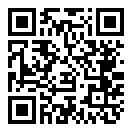The Fractional Fraud: Seven Myths of Money
Revolution Not
After discussing fractional lending practices with all kinds of people, I am able to say that most people don’t know where money comes from or what it is. The people that should know the most are actually the least informed thinking they know the most about our fractional reserve system. That is to say, the bankers were the most confident in their ignorance of money.
The best example I have of this is here when Matt, the Supervisor of Wells Fargo Home Mortgage, continued to claim they weren’t a part of the fractional reserve system.
The most common myth about where our money comes from is that our money comes from the government. When the USA needs money, they print US Treasury Notes and exchange the debt with the Federal Reserve. The government can then spend the Federal Reserve Notes. This is approximately where 5% of the money comes from. This is not the preferred way of subsidizing the banks though. The government prefers to issue bonds which the banks (and others) buy, and then sell for a profit to the Federal Reserve private bank not but days or weeks later.
The second common myth is that our money comes from the Federal Reserve private bank. Again, they are involved in only 5% of the money creation when transacting with the government through the Treasury. This percentage has likely changed due Federal Reserve private bank creating trillions out of thin air for the bailouts, QE69 and POMO. How it has changed hasn’t yet been documented.
So, where does 95% of the money in the United States of America come from? That portion of money is loaned into existence, at interest, by the banks as the money for every mortgage and loan. This is the origination process.
Fannie and Freddie
The third myth is that Fannie Mae or Freddie Mac are involved with mortgage origination. They are institutions backed by the government that purchase mortgages on the secondary market. It specifically states on each of their websites that they are not involved with mortgage and loan origination.
The fourth myth is that Fannie Mae and Freddie Mac provide liquidity in the mortgage and loan market. Given that the money is loaned into existence for every mortgage and loan, there is no need for liquidity in the market as there is no market (because there is no product) before the loan is made. Why does money created out of thin air need a market then?
There is really something fishy with this. What happens on the balance sheets of the banks during the mortgage process? Let me show you…
| Person A | Balance of bank A | Person B | Balance of bank B | |
| Before the home purchase | 0 | 0 | 0 | 0 |
| Mortgage originates | ||||
| Bank adds worth of loan to balance sheet | 0 | 100,000 | 0 | 0 |
| The bank check is written | ||||
| Money is given to customer | 100,000 as a bank check | 0 | 0 | 0 |
| Paper work is signed | ||||
| Money is tranfered | 0 | 0 | 100,000 as a bank check | 0 |
| Check deposited | ||||
| all new reserves that can be expanded by bank B |
0 | 0 | 0 | 100,000 |
| Mortgage Originator sells “mortgage” to “investors” | ||||
| Fannie buys mortgage liability, all new reserves that can be expanded by bank A |
0 | 100,000 | 0 | 100,000 |
The banks get the best of both worlds. An additional 100,000 is created out of thin air for the banking system, plus the liability can be claimed as an asset and sold to a government backed entity (to socialize the losses) thus pocketing the total sum of the loan on both sides. Then on top of that the banks act as the money collector for the mortgage holders thus gaining access to more money from the original loan.
In total, when a mortgage is originated, the banking system rips off the public both through inflation and claiming a liability as an asset to investors (like the government back entities).
You might be a little confused by this transaction table above. This leads to the fifth myth that the money in a bank is yours. When you make a deposit, you loan the money to the bank. To person B, the bank owes them that amount of money, but it’s not actually person B’s money. The bank uses this fact that your deposit isn’t yours any more by using it as reserve for more loans. That is to say, once a deposit is made, it’s their money, not yours.
What makes tender legal? Constitutionality
While laws exist proclaiming that Federal Reserve Notes are legal tender, it is the equality and convertibility to gold and silver that makes it Constitutional and thus legal tender.
US Constitution – Article One – Section Ten – Powers prohibited of States
No State shall… make any Thing but gold and silver Coin a Tender in Payment of Debts
Nixon Shock
The Nixon Shock
President Nixon imposed a 90-day wage and price freeze, a 10 percent import surcharge, and, most importantly, “closed the gold window”, ending convertibility between US dollars and gold
This last component is still with us today but President Nixon didn’t have the power to do this.
US Constitution – Article One – Section 8 – Powers of Congress
The Congress shall have Power To… To coin Money, regulate the Value thereof, and of foreign Coin, and fix the Standard of Weights and Measures;
Currently Congress is not doing this but that is beside the point for this article. Nixon did not have the Constitutional power to change the value of money. Only Congress had and has that power.
What is so strange is that Nixon’s unconstitutional act of regulating the value of money has caused the states to act unconstitutionally in every debt case involving Federal Reserve Notes since then.
This leads to the sixth myth that Federal Reserve Notes are legal tender. There are laws defining the Federal Reserve Notes as legal tender for all debts. As the banks create money out of thin air, it is not gold or silver. Even our own government tells us that Federal Reserve Notes are legal tender. Yet not a single person has been able to tell me how this is consistent with our Constitution. Given my understanding of the fractional lending process, our debt-money is not legal tender.
The actual cash is printed by the Treasury because our Constitution states that only the government can coin money but this is a loophole used by the bankers. They issue the money, and the government prints it. This is not the intention of the Constitution. All those strict constructionist judges out there should have an easy time turning over our monetary system on Constitutional grounds, only my fear is that they aren’t really strict constructionists. My fear for this is valid: they have extremely spotty records as strict constructionists especially when you read their arguments. The conservative wing of our judicial system seems more like the corporatists wing of the judicial system.
This has huge implications though. As the mortgage and foreclosure fraud works its way through the system, the easiest and best argument to shut down the banks is that they didn’t have consideration in the loan process. That is to say, the banks never had any skin in the game for the mortgage or loan. The loan document assumes that something of value is exchanged but the money was loaned into existence. Such Judges are activist in unconstitutionally defending Corporate Personhood and so I have doubts about their interpretation of money as defined by the Constitution.
This was just fine in the fractional system when on the gold standard as when they created the money out of thin air, it was instantly backed by gold. The problem was that they didn’t add any more gold to their reserves. This forced Nixon to take unconstitutional actions to preserve the system. The banks caused the Nixon Shock. In fact, what financial crisis haven’t the banks had a hand in?
Fractional Lending
The seventh myth is that the reserve ratio defines a relationship between how much of a deposit can become reserves. This is factually false. The Reserve Ratio only has to do with how much can be loaned into existence based on the reserves. The whole deposit can be used as reserves.
(The money multiplier) number is multiplied by the initial deposit to show the maximum amount of money it can be expanded to.
I have created a new table to diagram what happens when you put facts together:
| Fractional-Reserve Lending Cycled 10 times with a 20 percent reserve rate (the money multiplier thus being 1/0.2 or 5) | |||||
| individual bank | amount deposited | amount loaned out | reserves | maximum reserves | theoretical maximum amount loaned out |
| A | 100 | 80 | 20 | 100 | 500 |
| B | 80 | 64 | 16 | 500 | 2,500 |
| C | 64 | 51.20 | 12.80 | 2,500 | 12,500 |
| D | 51.20 | 40.96 | 10.24 | 12,500 | 62,500 |
| E | 40.96 | 32.77 | 8.19 | 62,500 | 312,500 |
| F | 32.77 | 26.21 | 6.55 | 312,500 | 1,562,500 |
| G | 26.21 | 20.97 | 5.24 | 1,562,500 | 7,812,500 |
| H | 20.97 | 16.78 | 4.19 | 7,812,500 | 39,062,500 |
| I | 16.78 | 13.42 | 3.36 | 39,062,500 | 195,312,500 |
| J | 13.42 | 10.74 | 2.68 | 195,312,500 | 976,562,500 |
| K | 10.74 | 976,562,500 | 4,882,812,500 | ||
| total reserves | |||||
| 89.26 | |||||
| total amount deposited | total amount loaned out | total reserves + last amount deposited | |||
| 457.05 | 357.05 | 100 | |||
We get 500 in step A as the theoretical maximum by taking the initial deposit of 100 and multiplying by the money multiplier, 5. All the following steps take the proceeding maximum and multiply by 5 each time.
Once again, there is no link between deposits and reserves. If the bank chooses, the entirety of the deposit can be reserves. The math they use in the above example is entirely misleading on the side of the banks as they imply there is a connection between deposits becoming reserves via some reserve ratio.
This is the banks intellectually misleading even the brightest economists and financial experts. The banks even encourage misleading concepts within their own bank! Thanks for showing me that Matt! I’ve had similar conversations of ignorance with JP Morgan investment bankers, Wells Fargo Advisors, Wells Fargo Home Mortgage, and 53rd. This does not bode well that our financial sector is so ignorant…. of simple financial concepts. Those of you who have gotten this far in the article. Are you still long on the financial sector?
Conclusion
With a $1 deposit, two banks can loan into existence an infinite amount of money. This also means, the banking system has the ability to loan money to itself to get out of any problem. With the kinds of reserve ratios that banks are now legally able to perform with, It has had the ability to create the money to get out of any problems which they create themselves. Now the Federal Reserve is taking on this role of printing money out of thin air so the banks can survive when it is the entire fractional reserve system that is the ponzi scheme.
Given that the only reason why Federal Reserve Notes have value is that they are limited in quantity, and inflation is all the Federal Reserve does in response to every problem regardless of whether there is too much money or too much inflation, we are in for a very hard landing of a type not experienced here in America for a long time: Hyper-inflation.
Lastly, all these arguments as to convertibility and tender can be turned around on the consumer. The banks don’t actually owe you your debt-money back because you loaned it to them and you don’t have any ability to claim that money was legal tender. If this is realized, a bank run would be inevitable and set in motion the hyper-inflationary collapse.
Leave a Reply
You must be logged in to post a comment.




 NoScript extension
NoScript extension
